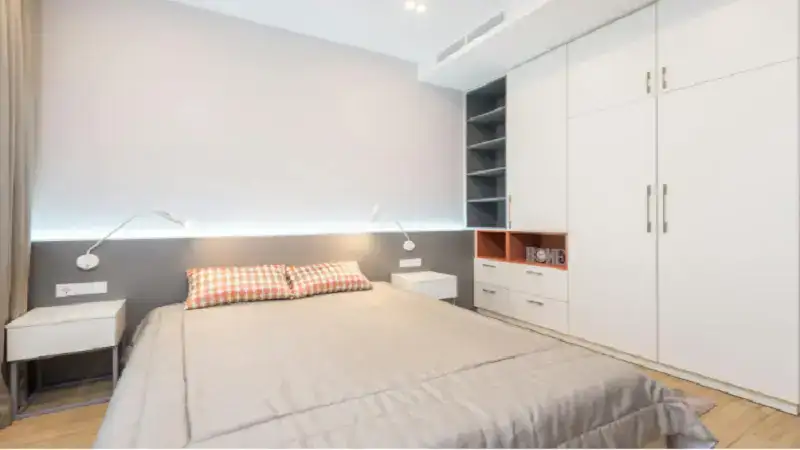A built-in wardrobe is more than just a storage solution; it’s an integral part of your home’s design and functionality. Customizing your built-in wardrobe can transform it into a stylish and efficient space that reflects your personal taste while maximizing storage. Here are some essential storage solutions and design tips to help you create the perfect built-in wardrobe.
1. Assess Your Space
Before diving into design, it’s crucial to assess the available space. Measure the dimensions of the area where the wardrobe will be installed, including height, width, and depth. Consider any architectural features, such as sloped ceilings or windows that may impact the design. Understanding your space will help you make informed decisions about layout and storage options.
2.Define Your Needs
Different lifestyles require different storage solutions. Take the time to define your needs and preferences. Do you have a large shoe collection? Are you a fashion enthusiast with numerous accessories? Consider your wardrobe habits and what items you need to store. This assessment will guide your customization choices, ensuring that the wardrobe meets your specific requirements.
3.Choose the Right Layout
The layout of your built-in wardrobe significantly impacts its functionality. Common layouts include:
- Hanging Space: Allocate sections for long and short hanging items. Use double-hanging rods for shorter garments to maximize vertical space.
- Shelving: Adjustable shelves can accommodate various items, from folded clothes to bags. Consider including a mix of open and closed shelving for a balanced look.
- Drawers: Incorporate drawers for smaller items like underwear, socks, and accessories. Soft-close mechanisms add a touch of luxury and convenience.
4.Incorporate Specialty Storage
To enhance functionality, consider incorporating specialty storage solutions. Here are a few ideas:
- Shoe Racks: Dedicated shoe racks or cubbies can keep your collection organized and easily accessible.
- Accessory Organizers: Use trays or dividers for jewelry, watches, and other accessories to prevent tangling and damage.
- Pull-Out Baskets: These are perfect for storing items like scarves, belts, or seasonal clothing, making it easy to access everything without digging through piles.
5.Select Quality Materials
The materials you choose for your built-in wardrobe will impact both aesthetics and durability. Opt for high-quality materials that can withstand daily use. Popular choices include:
- Wood: Solid wood offers a timeless look and durability. Consider finishes that complement your home’s décor.
- MDF: Medium Density Fiberboard is a cost-effective alternative that can be painted or veneered to achieve a polished appearance.
- Glass: Adding glass doors can create a modern look while allowing you to showcase your wardrobe’s contents.
6.Color and Finish Choices
The color and finish of your built-in wardrobe can set the tone for the entire room. Lighter colors can make a space feel larger and more open, while darker tones add warmth and sophistication. Consider the following:
- Neutral Tones: Whites, grays, and beiges are versatile and can blend seamlessly with various interior styles.
- Bold Colors: If you want to make a statement, consider rich colors like navy or emerald green for a dramatic effect.
- Finishes: Matte finishes provide a modern look, while gloss finishes can add a touch of elegance.
7.Lighting Solutions
Proper lighting is essential for any built-in wardrobe. Consider incorporating LED strip lights along shelves or inside cabinets to illuminate your clothing and accessories. Recessed lighting or spotlights can also enhance visibility. Dimmable options allow you to adjust the ambiance, making it easier to choose outfits.
8.Mirrors for Functionality and Style
Incorporating mirrors into your built-in wardrobe can serve multiple purposes. Full-length mirrors are practical for outfit checks, while mirrored doors can create an illusion of space and light. Choose a style that complements your wardrobe design, whether it’s a sleek modern look or a more ornate, traditional frame.
9.Personal Touches
Adding personal touches can make your built-in wardrobe feel uniquely yours. Consider incorporating decorative elements such as:
- Artwork: A small piece of art or a framed photo can add personality to the space.
- Decorative Boxes: Use stylish boxes for storing items while maintaining a cohesive look.
- Plants: Incorporating greenery can bring life to the wardrobe and enhance the overall aesthetic.
10.Plan for Future Changes
As your needs change, so should your wardrobe. When customizing your built-in wardrobe, consider flexibility. Adjustable shelving and modular components allow for easy reconfiguration as your storage needs evolve. This foresight ensures your wardrobe remains functional and stylish for years to come.
Conclusion
Customizing your built-in wardrobe is an exciting opportunity to create a functional and stylish storage solution tailored to your needs. By assessing your space, defining your storage requirements, and incorporating thoughtful design elements, you can craft a wardrobe that enhances both your lifestyle and your home’s aesthetics.
For those looking to explore high-quality and customizable wardrobe solutions, consider the OPPOLIA closet collection. This collection offers a range of options that blend elegance with practicality, ensuring your built-in wardrobe is not only beautiful but also highly functional. Explore OPPOLIA to find the perfect fit for your home!

